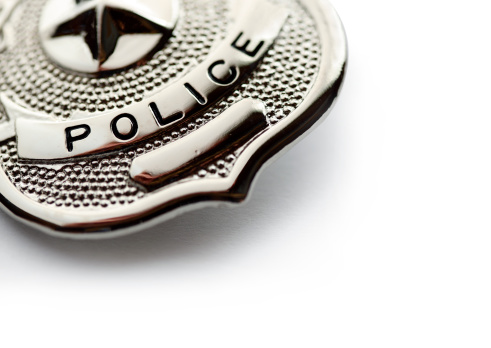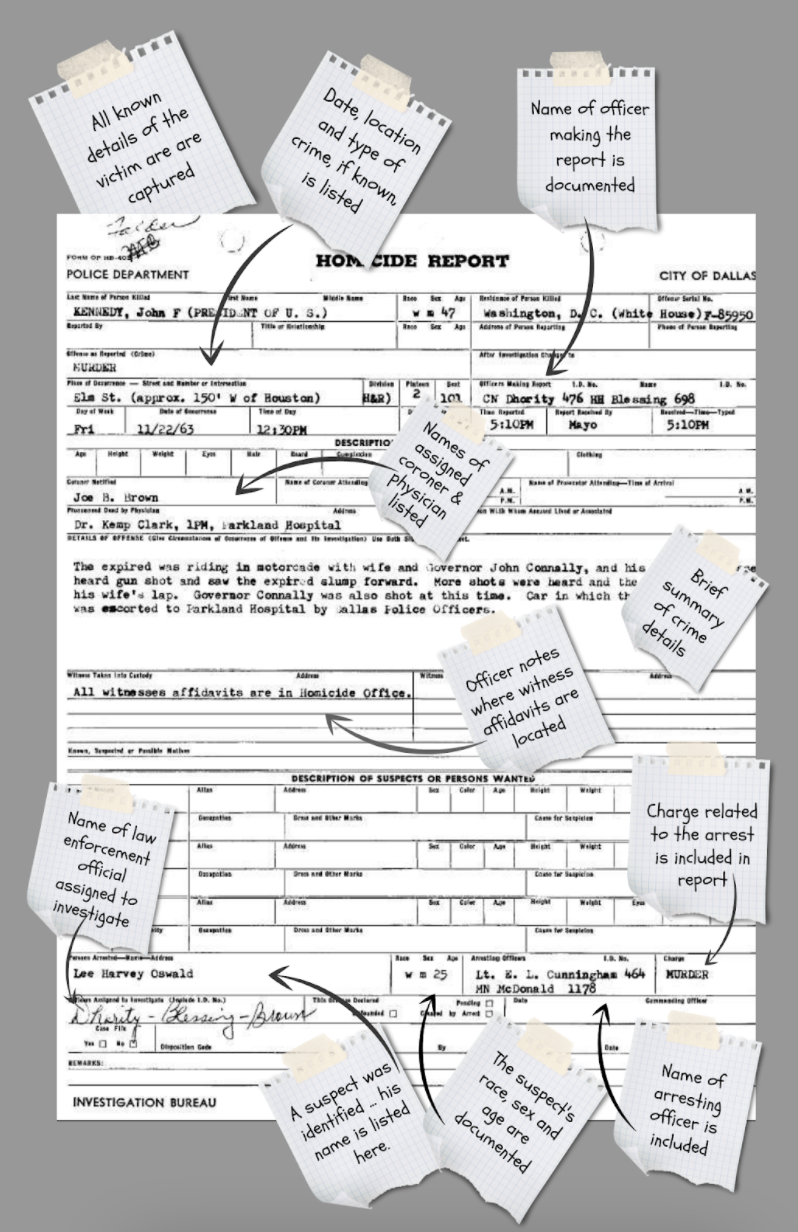A police report is an essential document that outlines critical information related to a report to law enforcement. This includes who was involved, the circumstances of the crime, time and date, and potential witnesses. And while usually associated with major crimes police reports also are used to document the circumstances of other less sinister incidents, such as accidents and public nuisances (i.e. your neighbor playing loud music on a weekday at 3 a.m.)
Even if you’re one of the lucky people who will never have your name included in a police report, you may still want to know the details involved in this important document—especially if you’re investigating a cold case or any other criminal incident.
A police report is the place to start to understand the who, what, where, when, how—and quite possibly the why—of a murder or other crime. But getting access to that is a question for another Uncovered resource. Check out this post dedicated to accessing public records.
Here’s what you need to know to get your hands on a police report, and what you can expect to find when you do.

How can I access a police report?
First, it’s important to understand that a police report is a public document. And you have every right to view the details of a police report under the Freedom of Information Act, commonly called FOIA, and other similar laws at the state level. Access to this information is incredibly important; especially when dealing with cold cases of the murdered and missing.
According to the Black Law Dictionary, police reports “become official records, and they are carefully kept for the benefit of the public.”
While the process varies from state to state on how you can obtain these reports, it’s likely that you will have to write a request for these public records unless you were directly involved in the incident. For example, if you were involved in a car accident and the police arrived to document the details of the incident, you more than likely can go to a police department and obtain copies of those records with proof of your identity.
If the state that you’re requesting a police report is fairly progressive, you may find that you can access it online after it has been transferred to a central archive location — typically a few days or weeks after the incident occurred.
How do I read a police report?
It’s important to remember that a police report is a formal document that must be filled out by a police officer when responding to an incident, whether it’s an accident, arrest, investigation, or any other incident. Whenever you come across a crime or an incident that warranted the involvement of the police, you can expect that a police report was filed.
Like every other important document, a police report should feature official branding—whether it’s the name of the police department and relevant details and/or a logo specifically stating which department issued the document. Make sure to take note of this if someone outside of a police department official shows you a police report and presents it as the real deal. If in doubt, present it to the police department to confirm its authenticity.
Depending on the complexity of the incident and the police department responding to it, the police report may be one page to several pages in length. For example, the murder of multiple people at a crime scene would likely require more than one page.
In most cases, the language will be straightforward and concise … “just the facts.”
This police report, which documented the assassination of U.S. President John F. Kennedy in 193, is an example of a typical one-page police report. Although it is decades old, police still document much of the same information:

Here is a summary of the critical details to look out for in a police report::
Case number: Each case is assigned a custom number by the law enforcement agency to document and easily identify it when it needs to be retrieved.
Date: The officer will capture the date and time of the report, as well as the date and time of the incident if known.
Location of the incident: In the case of the murder, an accident, theft or another incident, the officer will document the location. In some cases, more than one location may be involved in the scene of the crime. If so, the officer may include it in the summary.
Who reported the incident: Parties associated with reporting the incident in question
Details of the victim: The identity of the victim(s) is included in the report, including name, address of residence, age and gender, if known.
Details about suspects: If the officer has a suspect, similar identifying information will be included in the report, including race, age, etc.
Summary of incident: The officer will include all pertinent information that is known about the incident in a brief summary.
Name of reporting officer: The officer who responded to the call and created the report
Name of investigating officer: The officer who investigated the incident
Name of any others involved in the case: The police report also may include the names of the coroner, examiner and others included in the report.
Any witnesses: A summary of witness accounts may be included in the police report, or the reporting officer may indicate where they can be found if they are extensive.
What is the importance of a police report?
When researching a cold case or other crime, or even a traffic accident you were involved in, a police report can serve as the foundation for your project. It will give you a critical overview of what happened to who, when and where, and how.
